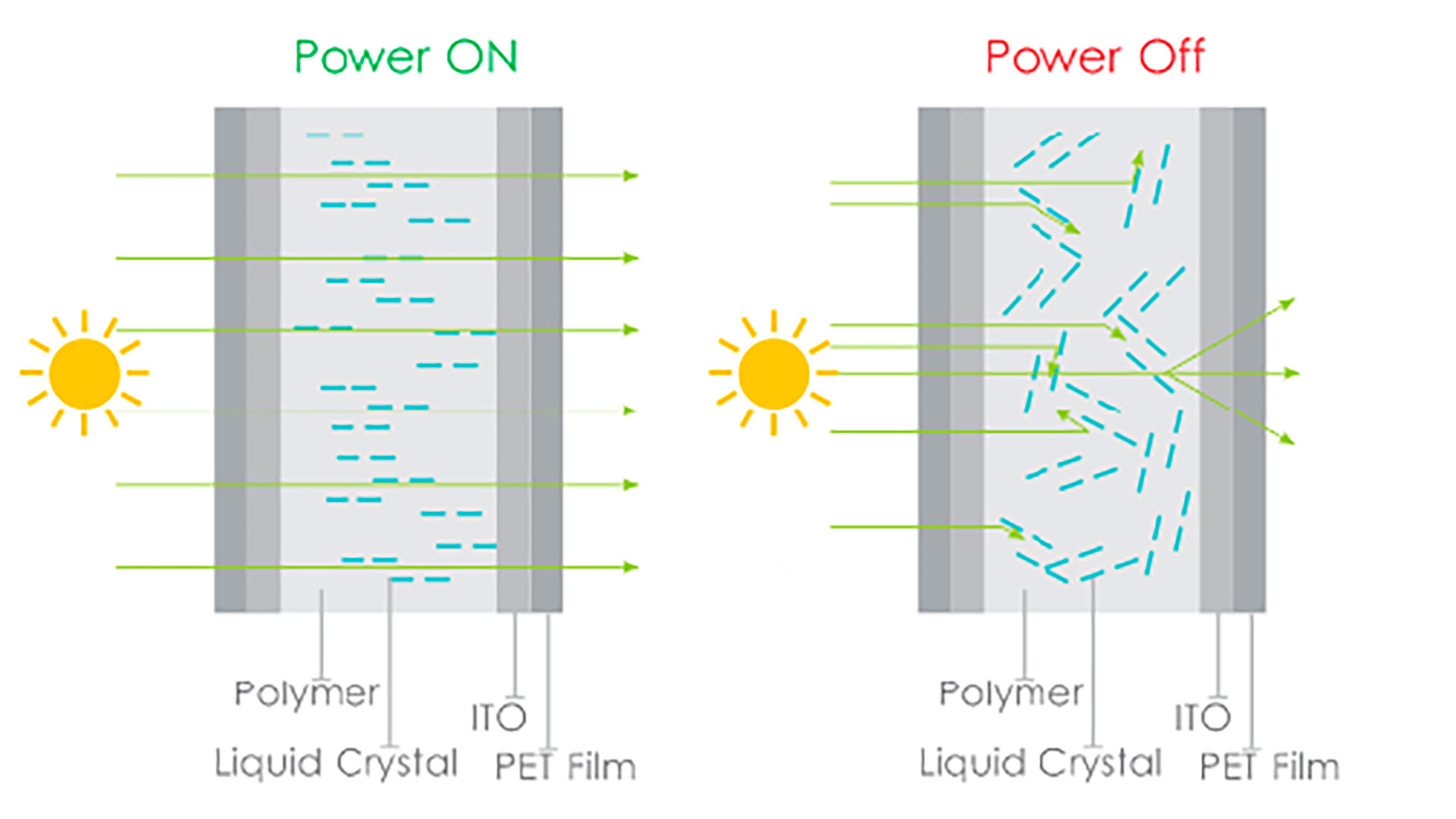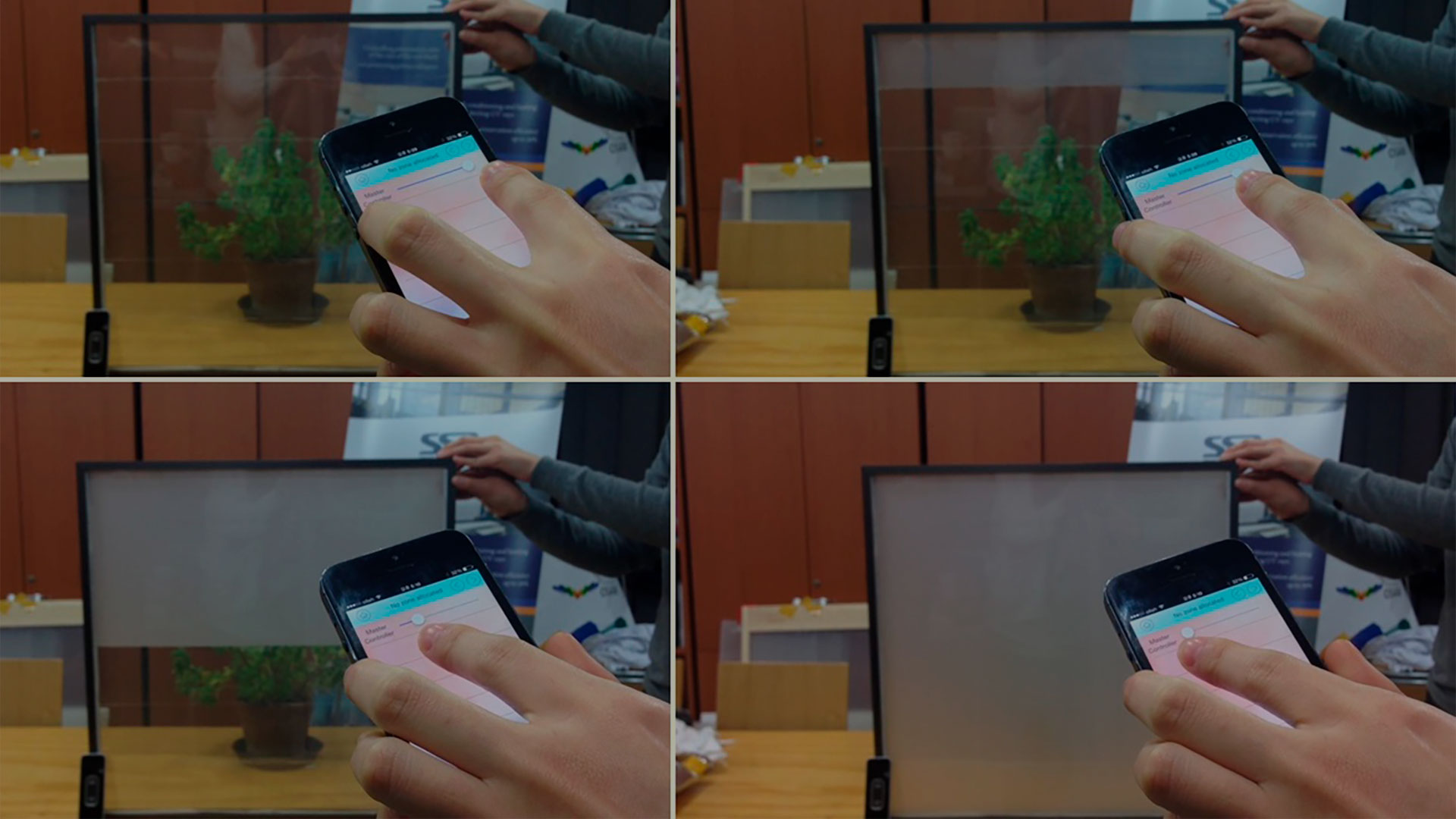Polymer Dispersed Liquid Crystal (PDLC) is a type of smart material that combines the properties of liquid crystal with those of polymers. PDLC is known for its ability to switch between transparent and opaque states in response to external stimuli, such as electric fields.
In this sense, when no electric field is applied to PDLC, the molecules of the liquid crystal are randomly oriented, causing the material to appear opaque or translucent. However, when an electric field is applied, these molecules align themselves parallel to the field, resulting in a transparent state of the PDLC. This versatility makes PDLC flexible and applicable to a variety of functions.

Its use in interior glazed partitions or windows is one of the most common. Its ability to change from transparent to translucent or opaque allows the user to opt for more or less privacy. PDLC is also integrated into building façades to control sunlight and the temperature of interior spaces. On the other hand, PDLC is also used as a projection screen in its opaque state, as it acts as a surface that reflects a good image quality.
By Tianshu Liu, Senior Architect in Amusement Logic’s Architectural Dept.






